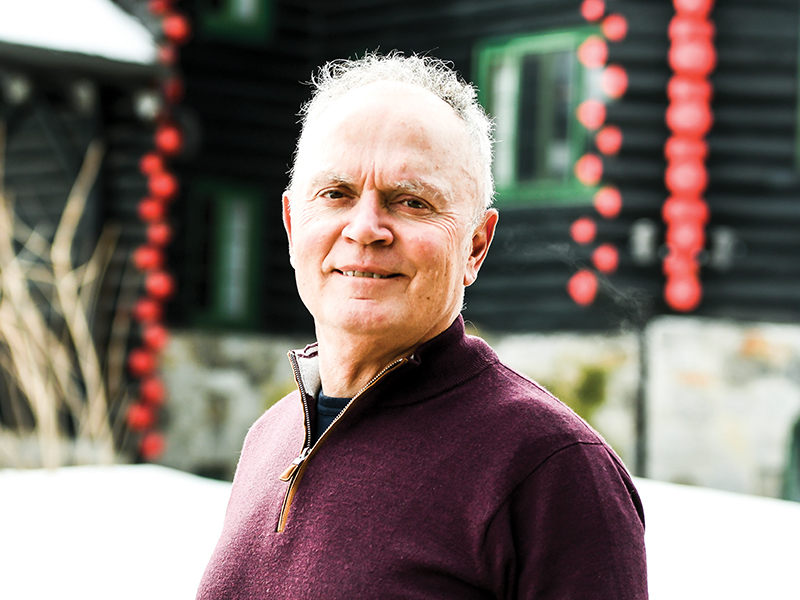

Even though it sounds obvious, maximizing retirement income and making it last for life isn’t what drives most retirees when it comes to making decisions — which is contributing to the challenges around decumulation, said Fred Vettese, an author and pension expert, during Benefits Canada‘s 2023 Defined Contribution Plan Summit.
“The hurdles we have to overcome are obvious ones: uncertain investment returns, unpredictable inflation, unknown lifespan and, finally, flawed thinking.”
Sharing examples of two fictional plan members, Vettese illustrated two income patterns. The Thompsons — Nick and Susan — are age 65 and 62, respectively. Between them, they have $600,000 in group registered retirement savings plans and $100,000 in tax-free savings accounts, with a traditional asset mix of 60 per cent in equities and 40 per cent in bonds. They also receive their Canada Pension Plan benefits — with Nick receiving 90 per cent of the maximum CPP and Susan at 75 per cent — and Nick receives his full old-age security benefits.
Read: Considerations for employers around the incoming CPP enhancements
With $700,000 in total savings, the Thompsons’ income in year one will be $28,000, he noted, but with the addition of CPP and OAS, that climbs to $60,000. However, there’s a gap in the first three years because Susan hasn’t yet started receiving her OAS.
As well, reality intervenes, he said, including poor investment returns and high inflation. “I’ve assumed in my projections that inflation is going to be five per cent for the next two years and then settle down to 2.2 per cent. It may or may not be and it may not settle them down. But what we’ve learned in the past couple of years is what I thought was dead: inflation, after 30 years of hovering around two per cent, is actually not dead after all.”
These events will impact the Thompsons’ financial results, with a net deficit of $42,000 a year by the time Nick is age 84 and Susan is age 81. Vettese suggested three options: filling in the income gap before Susan turns 65 by drawing money from one of the group RRSPs; increasing the initial withdrawal amount, from $600,000 to $71,000; and changing the future retirement income target.
However, after these changes, the Thompsons still have a big gap. “As a matter of fact, now the gap happens even sooner than it did before — it was at age 84 and now it’s 82 — and they end up being about $30,000 short for the rest of their life. Looks like we really were having as much trouble as we had before. But we have some enhancements coming.”
The enhancements include: reducing fees paid to service providers, potentially by keeping their savings with their employers through in-plan decumulation solutions; deferring CPP; and buying an annuity from an insurance company.
Read: A look at the legislative landscape for decumulation options in DC plans
After the first enhancement, the Thompsons have about three more years of income than they had before, said Vettese, and after the second, they’ve filled in the gap. “It’s as effective as it is because, deferring CPP to age 70, the way an actuary would look at it is, you’re getting a guaranteed six per cent return on your money for those five years. . . . The other thing that’s equally important is this is inflation-protected money.”
For the third enhancement, even more investment and longevity risk is transferred, but not inflation risk, he said, noting he isn’t as enamoured with buying an annuity as he used to be. One reason is the unknown of when inflation will return. “It may not happen in three or five years’ time; it may happen in 10 years, but it probably will happen again at some point. And you’re getting no inflation protection at all from annuities. That’s kind of the problem with them.”
However, for the Thompsons, the annuity, CPP and OAS is all secure income, said Vettese, noting that, after Nick reaches age 72, even if there was a financial crisis for 20 years, it wouldn’t matter all that much. “We’ve almost given them a defined benefit kind of a scenario here, at least after the first few years. . . . I’m not assuming anything optimistic here. I’m an actuary; we don’t do anything optimistic if we can help it.”
Despite the Thompsons’ retirement success, most plan members aren’t going to arrive at this scenario on their own, he said, noting this is where plan sponsors come in. “You may not only have Nick or Susan in your pension plan, . . . but employers can play a part by raising awareness [and] by looking for those solutions.”
Read more coverage of the 2023 DC Plan Summit.
